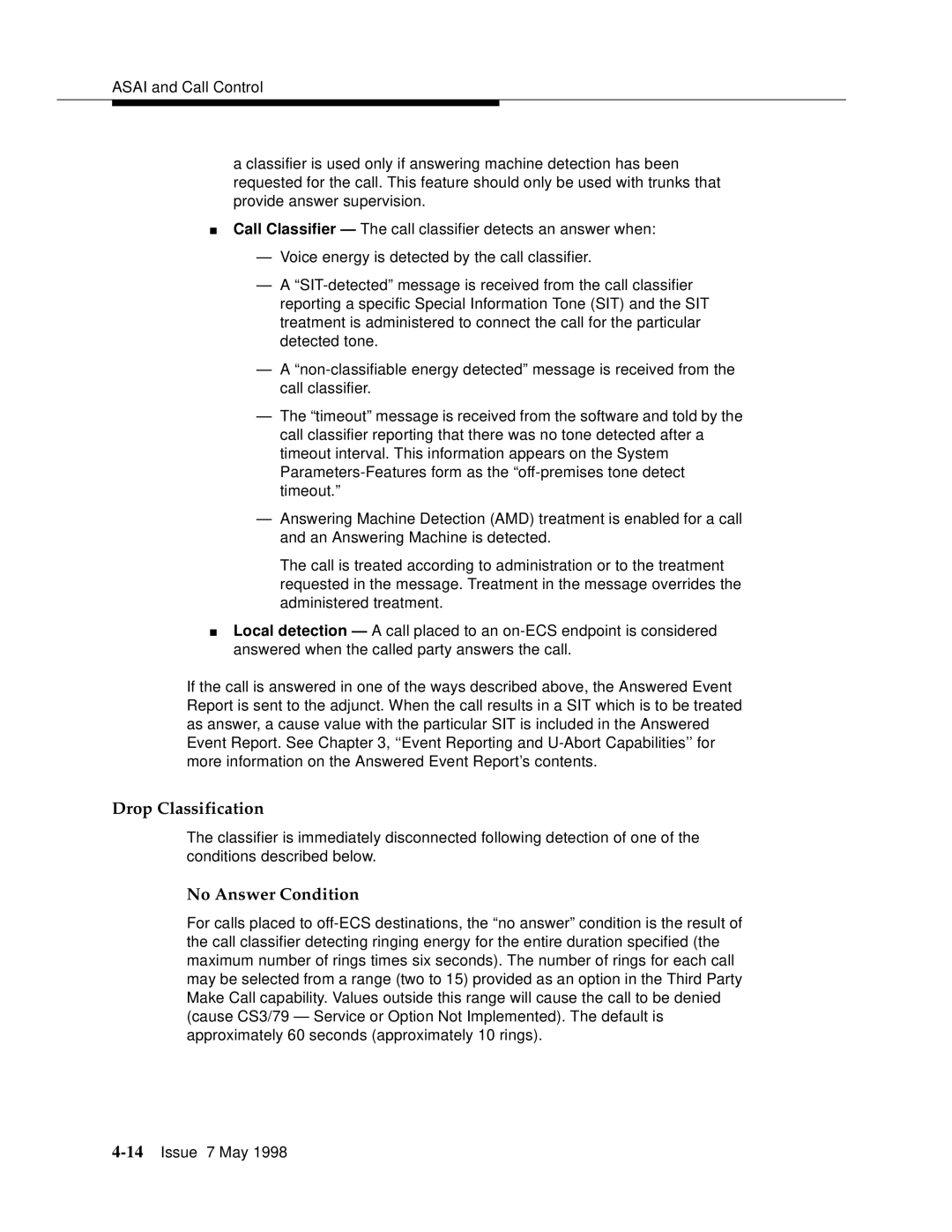ASAI and Call Control
a classifier is used only if answering machine detection has been requested for the call. This feature should only be used with trunks that provide answer supervision.
■Call Classifier — The call classifier detects an answer when:
—Voice energy is detected by the call classifier.
—A
—A
—The “timeout” message is received from the software and told by the call classifier reporting that there was no tone detected after a timeout interval. This information appears on the System
—Answering Machine Detection (AMD) treatment is enabled for a call and an Answering Machine is detected.
The call is treated according to administration or to the treatment requested in the message. Treatment in the message overrides the administered treatment.
■Local detection — A call placed to an
If the call is answered in one of the ways described above, the Answered Event Report is sent to the adjunct. When the call results in a SIT which is to be treated as answer, a cause value with the particular SIT is included in the Answered Event Report. See Chapter 3, ‘‘Event Reporting and
Drop Classification
The classifier is immediately disconnected following detection of one of the conditions described below.
No Answer Condition
For calls placed to
